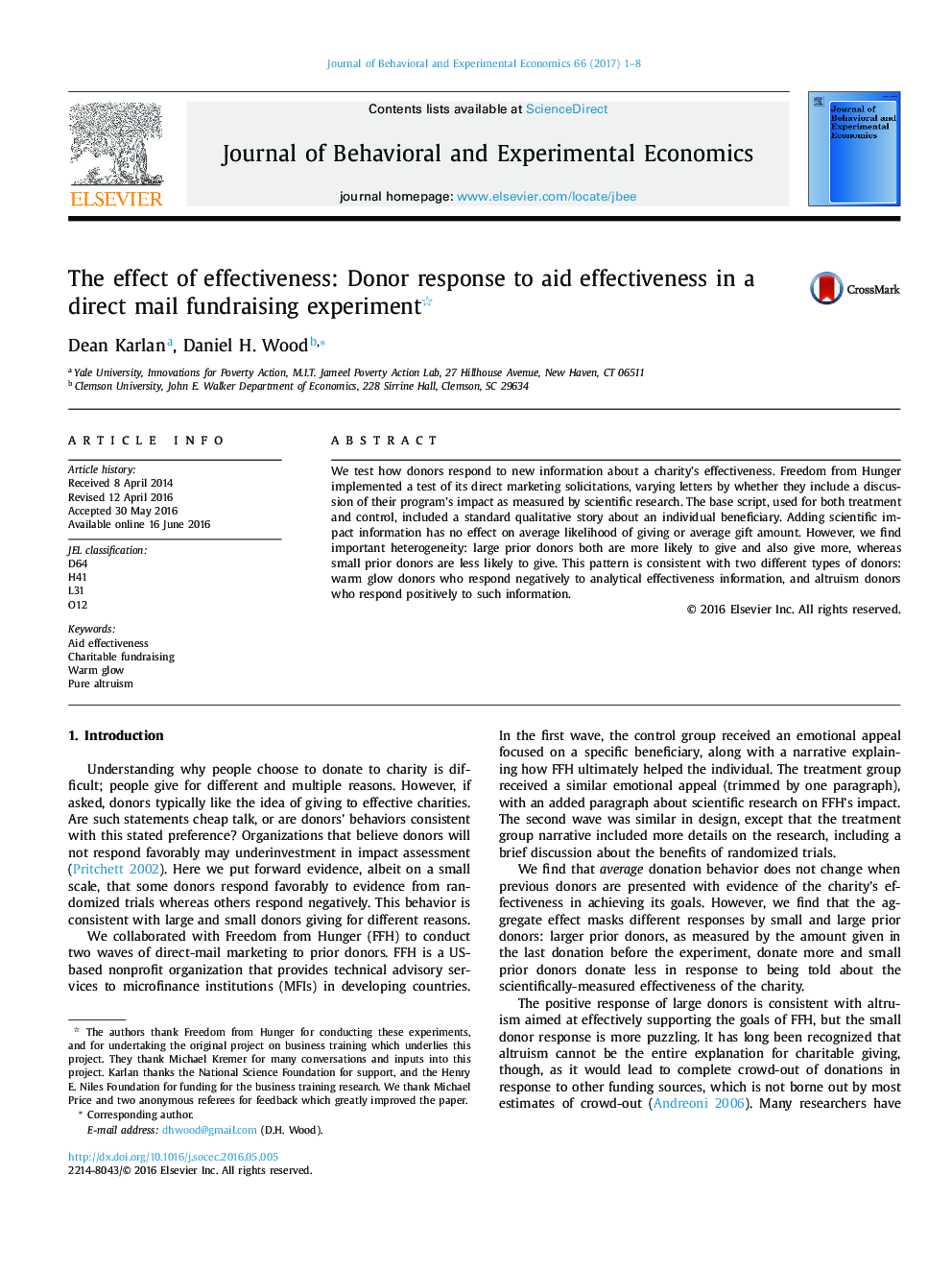| Article ID | Journal | Published Year | Pages | File Type |
|---|---|---|---|---|
| 5034194 | Journal of Behavioral and Experimental Economics | 2017 | 8 Pages |
â¢We varied a charity's direct marketing solicitations to prior donors.â¢We informed a treatment group of scientific research on the charity's impact.â¢Recent large donors increased giving and recent small donors decreased giving.â¢We argue that large donors are altruistic while small donors have warm-glow motives.
We test how donors respond to new information about a charity's effectiveness. Freedom from Hunger implemented a test of its direct marketing solicitations, varying letters by whether they include a discussion of their program's impact as measured by scientific research. The base script, used for both treatment and control, included a standard qualitative story about an individual beneficiary. Adding scientific impact information has no effect on average likelihood of giving or average gift amount. However, we find important heterogeneity: large prior donors both are more likely to give and also give more, whereas small prior donors are less likely to give. This pattern is consistent with two different types of donors: warm glow donors who respond negatively to analytical effectiveness information, and altruism donors who respond positively to such information.
